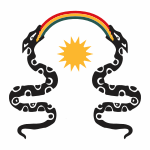Related Research Articles

A constellation is an area on the celestial sphere in which a group of visible stars form a perceived pattern or outline, typically representing an animal, mythological subject, or inanimate object.

Crux is a constellation of the southern sky that is centred on four bright stars in a cross-shaped asterism commonly known as the Southern Cross. It lies on the southern end of the Milky Way's visible band. The name Crux is Latin for cross. Even though it is the smallest of all 88 modern constellations, Crux is among the most easily distinguished as its four main stars each have an apparent visual magnitude brighter than +2.8. It has attained a high level of cultural significance in many Southern Hemisphere states and nations.
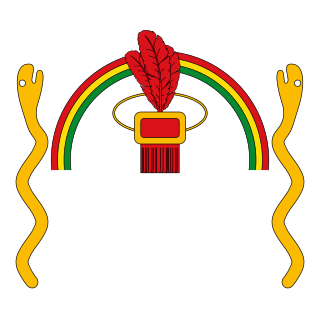
The Inca Empire, called Tawantinsuyu by its subjects, was the largest empire in pre-Columbian America. The administrative, political, and military center of the empire was in the city of Cusco. The Inca civilization rose from the Peruvian highlands sometime in the early 13th century. The Spanish began the conquest of the Inca Empire in 1532 and by 1572, the last Inca state was fully conquered.

The llama is a domesticated South American camelid, widely used as a meat and pack animal by Andean cultures since the Pre-Columbian era.

Ursa Major is a constellation in the northern sky, whose associated mythology likely dates back into prehistory. Its Latin name means "greater bear", referring to and contrasting it with nearby Ursa Minor, the lesser bear. In antiquity, it was one of the original 48 constellations listed by Ptolemy in the 2nd century AD, drawing on earlier works by Greek, Egyptian, Babylonian, and Assyrian astronomers. Today it is the third largest of the 88 modern constellations.

The zodiac is a belt-shaped region of the sky that extends approximately 8° north and south of the ecliptic, which is the apparent path of the Sun across the celestial sphere over the course of the year. The orbital paths of the Moon and major planets are within the belt of the zodiac.
Year 1471 (MCDLXXI) was a common year starting on Tuesday of the Julian calendar.

Cusco or Cuzco, is a city in Southeastern Peru near the Urubamba Valley of the Andes mountain range. It is the capital of the Cusco Region and of the Cusco Province. The city is the seventh most populous in Peru; in 2017, it had a population of 428,450. Its elevation is around 3,400 m (11,200 ft).

Machu Picchu is a 15th-century Inca citadel located in the Eastern Cordillera of southern Peru on a 2,430-meter (7,970 ft) mountain ridge. Often referred to as the "Lost City of the Incas", it is the most familiar icon of the Inca Empire. It is located in the Machupicchu District within Urubamba Province above the Sacred Valley, which is 80 kilometers (50 mi) northwest of Cusco. The Urubamba River flows past it, cutting through the Cordillera and creating a canyon with a tropical mountain climate. In reference to the site’s name, for most speakers of English or Spanish, the first 'c' in Picchu is silent. In English, the name is pronounced or, in Spanish as [ˈmatʃu ˈpitʃu] or [ˈmatʃu ˈpiɣtʃu], and in Quechua as [ˈmatʃʊ ˈpɪktʃʊ].

The Coalsack Nebula is a dark nebula, which is visible to the naked eye as a dark patch obscuring part of the Milky Way east of Acrux in the constellation of Crux.

Quipu are recording devices fashioned from strings historically used by a number of cultures in the region of Andean South America.

The Chachapoyas, also called the "Warriors of the Clouds", was a culture of the Andes living in the cloud forests of the southern part of the Department of Amazonas of present-day Peru. The Inca Empire conquered their civilization shortly before the Spanish conquest in the 16th century. At the time of the arrival of the conquistadors, the Chachapoyas were one of the many nations ruled by the Incas, although their incorporation had been difficult due to their constant resistance to Inca troops.
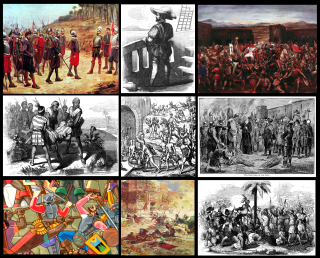
The Spanish conquest of the Inca Empire, also known as the Conquest of Peru, was one of the most important campaigns in the Spanish colonization of the Americas. After years of preliminary exploration and military skirmishes, 168 Spanish soldiers under conquistador Francisco Pizarro, along with his brothers and their indigenous allies, captured the Sapa Inca Atahualpa in the 1532 Battle of Cajamarca. It was the first step in a long campaign that took decades of fighting but ended in Spanish victory in 1572 and colonization of the region as the Viceroyalty of Peru. The conquest of the Inca Empire, led to spin-off campaigns into present-day Chile and Colombia, as well as expeditions to the Amazon Basin and surrounding rainforest.

The Inca religion was a group of beliefs and rites that were related to a mythological system evolving from pre-Inca times to Inca Empire. Faith in the Tawantinsuyu was manifested in every aspect of his life, work, festivities, ceremonies, etc. They were polytheists and there were local, regional and pan-regional divinities.
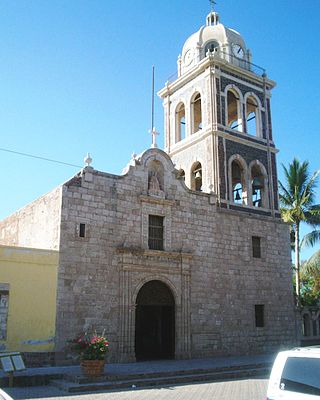
Reductions were settlements established by Spanish rulers and Roman Catholic missionaries in Spanish America and the Spanish East Indies. In Portuguese-speaking Latin America, such reductions were also called aldeias. The Spanish and Portuguese relocated, forcibly in many cases, indigenous inhabitants of their colonies into urban settlements modeled on those in Spain and Portugal.

Coricancha, Koricancha, Qoricancha or Qorikancha was the most important temple in the Inca Empire. It is located in Cusco, Peru, which was the capital of the empire.
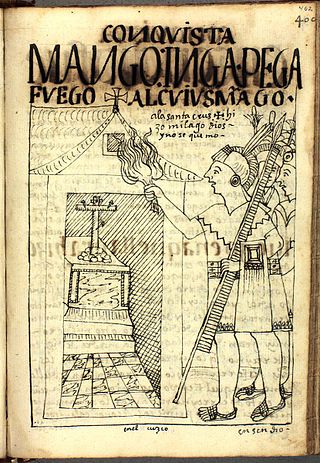
The 10 month siege of Cusco by the Inca army under the command of Sapa Inca Manco Inca Yupanqui started on 6 May 1536 and ended in March 1537. The city was held by a garrison of Spanish conquistadors and Indian auxiliaries led by Hernando Pizarro. The Incas hoped to restore their empire (1438–1533) with this action, but it was ultimately unsuccessful.

Inca mythology is the universe of legends and collective memory of the Inca civilization, which took place in the current territories of Colombia, Ecuador, Peru, Bolivia, Chile and Argentina, incorporating in the first instance, systematically, the territories of the central highlands of Peru to the north.

The Andean civilizations were South American complex societies of many indigenous people. They stretched down the spine of the Andes for 4,000 km (2,500 mi) from southern Colombia, to Ecuador and Peru, including the deserts of coastal Peru, to north Chile and northwest Argentina. Archaeologists believe that Andean civilizations first developed on the narrow coastal plain of the Pacific Ocean. The Caral or Norte Chico civilization of coastal Peru is the oldest known civilization in the Americas, dating back to 3500 BCE. Andean civilization is one of the six "pristine" civilizations of the world, created independently and without influence by other civilizations.
Mama Quilla, in Inca mythology and religion, was the third power and goddess of the moon. She was the older sister and wife of Inti, daughter of Viracocha and mother of Manco Cápac and Mama Uqllu (Mama Ocllo), mythical founders of the Inca empire and culture. She was the goddess of marriage and the menstrual cycle, and considered a defender of women. She was also important for the Inca calendar.
References
- ↑ Freeman, Benjamin (ed.). "AP WORLD PEOPLE TO KNOW". Freemanpedia. Retrieved 2023-06-18.
- ↑ D'Altroy, Terence N. (2002). The Incas . The Peoples of America. Oxford: Blackwell Publishing. p. 149. ISBN 978-0-631-17677-0.
- ↑ Prieto, Andres I. (2011-03-28). Missionary Scientists: Jesuit Science in Spanish South America, 1570-1810. Vanderbilt University Press. p. 110. ISBN 978-0-8265-1744-9.
- ↑ Dahle, H. "Orion raising over petroglyphs". European Southern Observatory . Retrieved 2023-06-18.
